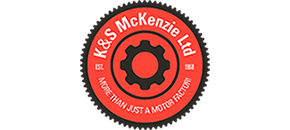The underrun protection device is a safety device for protecting the driver in case a car drives into a truck or trailer from behind. While most people welcome the tightening of requirements to improve safety, some may not realise that the coming new regulations for underrun protection will affect the transport industry in different ways. In this article, we take a look at how the new rules affect you as a vehicle owner or a fleet manager.
Why new regulations?
Road safety issues are always in focus and different regulations for improving road safety are continuously evolving. This also applies to the heavy truck rules. Transport in general is expected to increase by 50% by 2030, and therefore we can also expect an increase in heavy vehicle traffic. The industry has a responsibility to contribute to a safer traffic environment and part of this is to review how heavy vehicles can be equipped to reduce the risk of injuries. This is why the requirements for underrun protection will be tightened.
Which rules will change and when?
How underrun protection should be featured is regulated by UNECE Regulation 58, or commonly R58. This regulation is updated with a new revision effective from September 1st 2019, for new type-approved vehicles, and September 1st 2021, for newly registered vehicles. However, there may be local deviations and agreements regarding the transition to the new rules.
What is new?
Simply put, the vehicle must be able to withstand higher forces and have a lower ground clearance to prevent tracing vehicles from being pushed under the truck or trailer at a rear end collision. This may sound simple, but in fact, it places significant demands on manufacturers of underrun protection.
For example, computer computations of strength and deformation are not enough but underrun protection must also be tested in physical test environments – with reduced permissible vertical deformation – to be approved.
A consequence of the rule sharpening is that the weight of underrun protection increases. Also, the range of approved underrun protection can be significantly reduced.
To read more about what this means for you, click HERE to read our full newsletter article.


